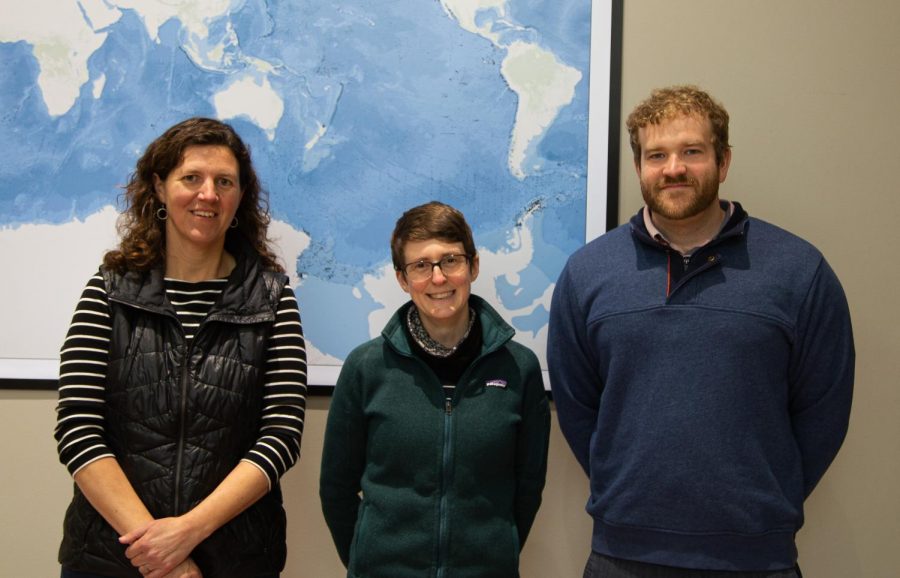$5.8 million renovation turns former ink factory into OSU’s Marine, Geology Repository
March 25, 2020
A $5.8 million renovation to a former ink factory has transformed Oregon State University’s Marine and Geology Repository into a cutting-edge resource for Earth scientists.
The 33,000-square-foot facility was dedicated to the repository after OSU assumed stewardship of the Antarctic and Southern Ocean National Collection of Rock and Sediment Cores. The Antarctic Core Collection contains over 11 miles of cores, doubling the size of the previous collection.
The National Science Foundation put out a request for new stewards in 2015 after Florida State University, the previous owners of the Antarctic Core Collection, announced they’d no longer host the collection of samples. OSU was one of five universities that applied to host the cores, and was eventually selected to receive the NSF grant in 2017.
Cores are long, thin cylinders of sediment or ice excavated from the Earth, which are then cut into five foot sections. After arriving at the repository, the cores are split into two halves. One half is stored in an archive to be used as a permanent reference, while the other is made available for research purposes.
“I would say that OSU’s grant was funded because they had such a great track record of digitizing things and creating standards for curating sediment cores and rock samples,” said Antarctic Core Curator Val Stanley. “There was also this building that was already in existence that the College of Earth, Ocean and Atmospheric Science was willing to commit to the project.”
Scientists from around the world can access these cores for samples and research with proper scientific justification. Samples can be distributed from the repository, though researchers will typically come to the facility themselves. Organizations like the United States Geologic Survey, the National Oceanic and Atmospheric Administration and many individual universities have all utilized samples taken from these cores.
“It’s basically a rock library,” said Cara Fritz, an assistant curator of the repository. “We provide the materials to learn about the past of the oceans from these samples.”
Cores can be used to answer complex questions about subjects like paleoceanography, paleoclimatology and plate tectonics. Some of the ice cores date back 800,000 years, while some sediment cores go back tens of millions of years. These samples hold a plethora of information on how Earth was shaped over time.
“The first evidence that Earth was impacted by a supernova event in the last five million years came from some of the cores we have here,” said Assistant Curator Kevin Konrad.
Acting as stewards of one of the largest core collections in the U.S., the faculty’s primary goal is to enable and preserve access to the collection.
OSU’s history of collecting and housing cores dates back to the 1960s, when many of the cores had to be stored in the refrigerator of a Corvallis, Ore. Chinese restaurant. While the organization of these samples have improved over the years, repository faculty felt that moving into a dedicated facility was a necessary step. According to Konrad, the current repository has space to collect cores for the next 50 years.
As hosts for the foreseeable future, repository staff are working on creating a uniform system on how samples are named.
“Naming is one of our major issues, at least it used to be in the past. People would name things differently depending on who collected it, so there’s no consistency,” Konrad said. “Sometimes people would collect a sample, do work on it, and publish a manuscript on it. Then someone else would do work on the same sample and rename it for whatever reason to match their theme.”
The repository is currently in the process of creating a publicly accessible digital database for the samples. QR codes are printed on most core sample boxes; these codes contain valuable information about the sample’s structure and history.
Konrad said, “Most data back in the day was a sharpie written on a bag. Now we have digital databases for everything we have, all of our samples are QR code labeled, so you can scan them and get metadata and more information online…we’re really trying to make it more accessible for the wider scientific community.”











































































































